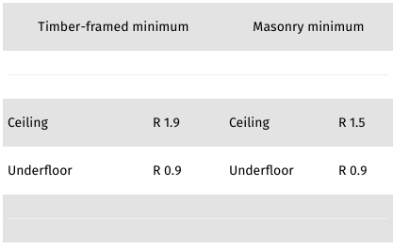Information for private rental property owners.
The Residential Tenancies Act amendment comes into force on July 1st 2016. Now, all rental properties must meet the new minimum standards for insulation.
Since 2008 Insulation South has been retrofitting insulation into rental properties both privately and as official service providers of the now finished EECA Warm Up New Zealand: Heat smart programme.
The requirements for smoke alarms and insulation may look daunting, but to make compliance easy we offer a Comprehensive 50-point insulation and smoke alarm compliance assessment for $79. Click here for more details.
The following information has been provided from the MBIE which you can access here.
Key changes:
By 1 July 2016 Housing New Zealand and Community Housing Provider managed properties, where tenants pay an income related rent, must meet the new insulation requirements.
By 1 July 2019 all remaining residential rental properties covered by the RTA must meet the new insulation requirements.
Landlords are required to make a statement in the tenancy agreement on the extent of and details about the insulation installed in their residential property. In order to make this statement, landlords will need to check and confirm what insulation is installed in their rental property. If the existing insulation does not meet the minimum thermal requirements (expressed in R-values) specified in the regulations, or is incomplete, damaged or damp, landlords will need to either replace the existing or install new insulation in the ceiling and underfloor to meet the current Building Code requirements.
Minimum R-values across New Zealand
Nationwide mandatory insulation requirements in New Zealand were first introduced in 1978 and have always been expressed in R-values, which are a measure of thermal resistance. The higher the R-value, the better the thermal performance. Building insulation products are tested to meet a certain R-value and the level is stated on the product labels.
Existing rental properties that already have insulation installed must be upgraded if the ceiling and underfloor insulation does not meet the R-value levels set out in Table 1 below.
Table 1 Level of insulation below which rental properties must be upgraded (product R-values)
These R values are roughly equivalent to those that applied for new buildings in the 1978 minimum thermal requirements (NZS4218P:1977). If your property was built after 1978 and complied with the minimum insulation requirements at the time they were built the property will comply, provided the insulation is in reasonable condition. This includes properties where the Verification Method or Alternative Solutions were used.
Proposed insulation and thermal performance requirements
Existing rental properties which currently have no insulation in the ceilings and under floors must have new insulation installed in these places.
The new insulation must meet minimum requirements that are benchmarked on the current Building Code (H1/AS1) requirements for ceilings and underfloor areas (noted in Table 2 below).
Table 2 Minimum requirements for new and topped up insulation in rented homes (product R-values)
For properties that do not have ceiling and underfloor insulation that meets the R-value requirements in Table 1, new ceiling and underfloor insulation must be installed that ensures the total level of insulation in the ceiling and underfloor meet (or exceed) the minimum thermal requirements in Table 2. The installation of electrically conductive insulation products (such as reflective foil products)will be banned by the regulations.
The ceiling insulation in these properties would need to be replaced if it is excessively compressed, damp or damaged; or have a “top-up” where new insulation is installed over the existing insulation if it is still in reasonable condition.
Exclusions from insulation requirements
The following five categories of residential rental properties are excluded from the insulation requirements in the regulations:
Where it is not practical to retrofit insulation because of the physical design or construction of the property, but only until such time as access to these spaces becomes possible. Where a landlord is unable to install the insulation to the required standards themselves they are expected to commission someone to do it on their behalf.
Where, within 12 months of the commencement of a tenancy, the landlord intends to demolish or substantially rebuild all or part of the property, and can provide evidence of having applied for the necessary resource consent and/or building consent for the redevelopment or building work.
Where a property is purchased and immediately rented back to the former owner-occupier - in which case a 12 month exemption will apply from the date of purchase.
If a property does not meet the insulation requirements, but a landlord can provide evidence that when insulation was originally installed it complied with particular insulation requirements, for example an Acceptable or Alternative Solution, or was approved under the Verification Method, then it is excluded from requirements provided that the insulation is in reasonable condition.
Where the habitable space of another unit (e.g. apartment) is directly above or below a ceiling or floor, this area does not need to be insulated.
For more information, please visit the MBIE website here.


